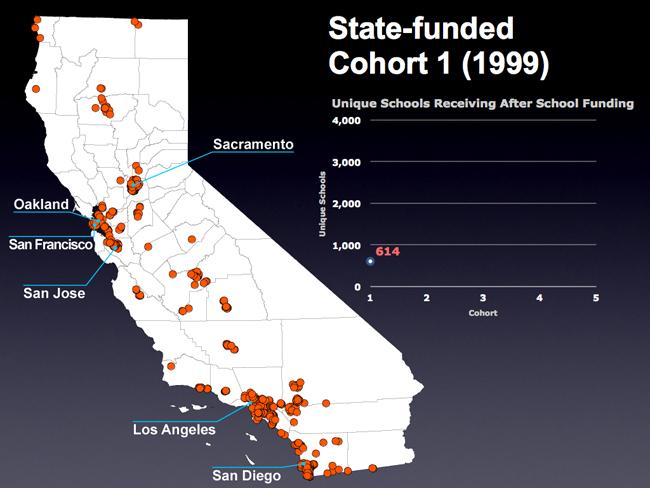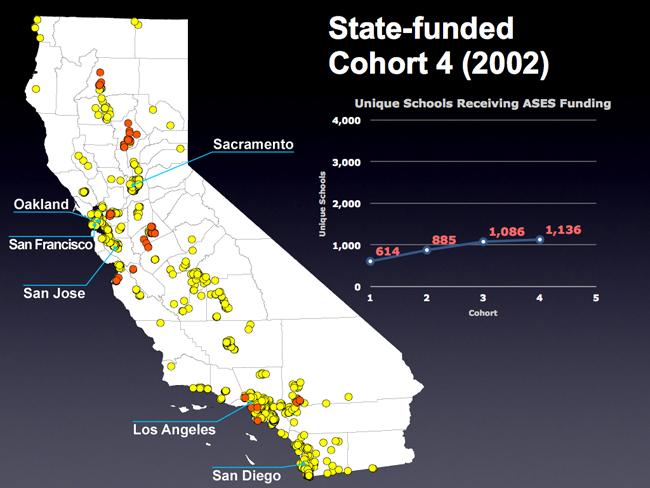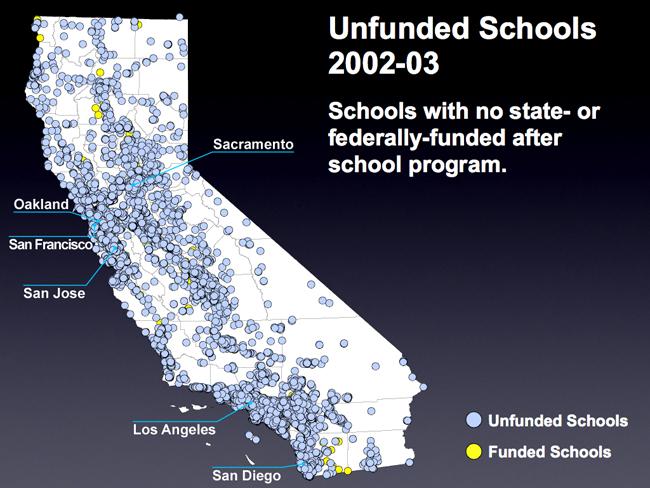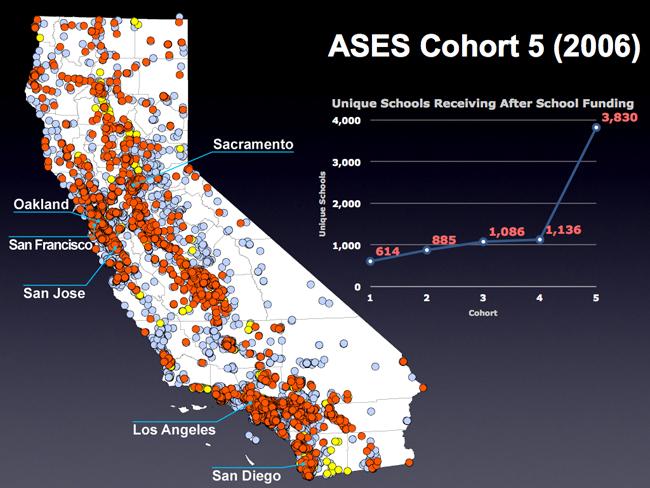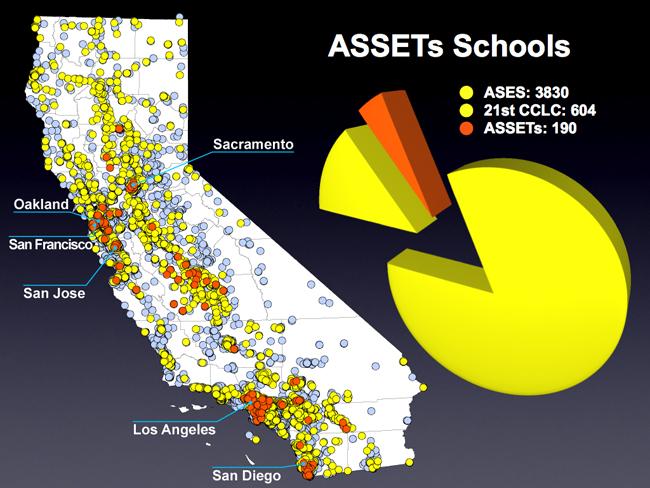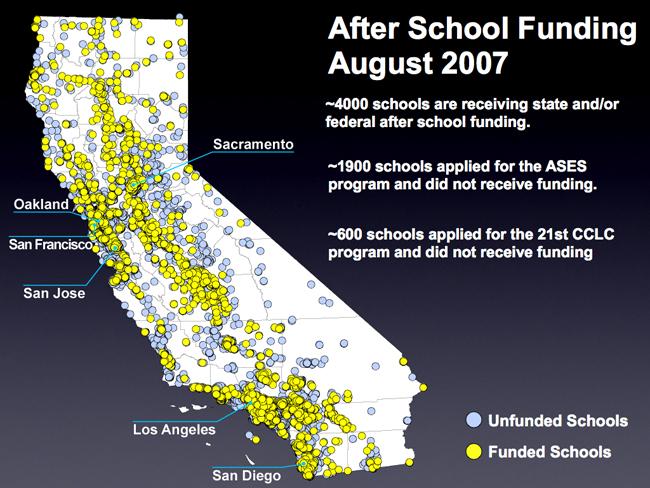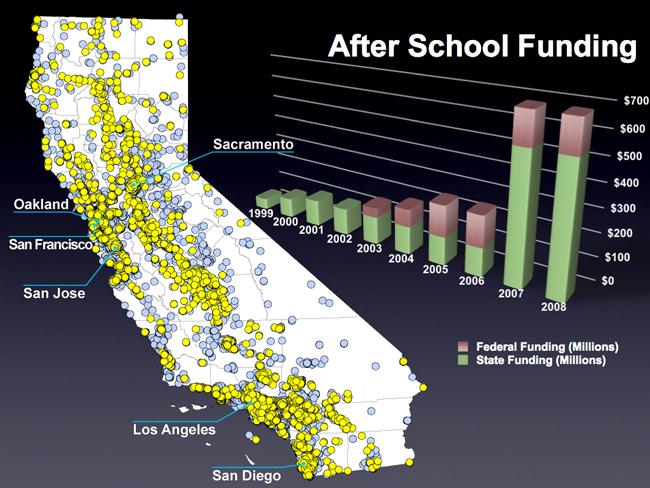History of Afterschool Policy
Learn About the History of CA Afterschool
Watch the video
Welcome to the California Afterschool Network presentation of California’s Afterschool Landscape. Using data acquired from the California Department of Education, this presentation illustrates the implementation of the largest state funded expansion of after-school services in the nation’s history. We will do this by illustrating the rollout of proposition 49 and the After School Education and Safety or ASES program and then presents the current statewide picture of state and federal funding.
California’s After School Funding Landscape
Welcome to the California Afterschool Network presentation of California’s Afterschool Landscape. Using data acquired from the California Department of Education, this presentation illustrates the implementation of the largest state funded expansion of after-school services in the nation’s history. We will do this by illustrating the rollout of proposition 49 and the After School Education and Safety or ASES program and then presents the current statewide picture of state and federal funding.
California After School Funding (1999 – 2002)
The journey began in 1999, when California began funding after-school programs with a 50 million dollar investment. Here you will notice that each new school with after school funding will be represented in orange, schools with continuing funding are represented in yellow. With each new cohort of state funded after school programs the investment grew. In 2002, California was investing 120 million dollars into statewide after school programs.
California’s After School Need (2002)
Represented on this map are school sites that in 2002 were not receiving state or federal funding for after-school programs. At this time there were some schools receiving federal funding that are not represented on this map.
Proposition 49
In November of 2002, California Voters passed proposition 49, the After School Education and Safety, or ASES program which mandated that $550 million dollars each year be made available for Kindergarten through 9th grade after-school programs. These funds would be released only after the state achieved a financial trigger making the release of these funds feasible. Between 2003 – 2005 the financial trigger necessary to release the additional 430 million dollars had not been achieved and there was no expansion of state funded after-school programs.
Collaboration to Implement Proposition 49
Meanwhile, anticipating the financial trigger for the After School Education and Safety program individuals from the Governors office, the California Department of Education, Foundations, Consulting Groups, School Districts, Regional Leads from County Offices of Education, Afterschool Providers and Child/Youth Advocacy groups were gathering to discuss how proposition 49, ASES program would be implemented.
Senate Bill 638 (Torlakson)
In 2006 Senator Tom Torlakson authored Senate Bill 638. This bill allowed easier access to Proposition 49 funds by allowing for direct grants instead of a reimbursement system, reducing a 50 percent grant match for programs to 33.3 percent grant match, and increasing the daily per pupil rate from $5 to $7.50, while at the same time raising the grant caps to allow existing programs to serve the same amount of students.
ASES Funding (August 2007)
In September of 2006 Governor Schwarzenegger signed SB 638 into law and in 2006/07 California hit its financial trigger, releasing the additional 430 million dollars to fund new after school programs. As of August 2007, over 3,800 schools are receiving ASES funding.
21st Century Community Learning Centers Funding (August 07)
California also receives Federal Funding to administer the 21st Century Community Learning Centers program. Shown in orange and fading to yellow you will now see the over 600 elementary and middle schools in California with 21st Century grants.
ASSETs Programs (August 07)
Now shown in orange are the federally funded After School Safety and Enrichment for Teens (ASSETS) programs operating in approximately 190 High Schools in California.
Unmet Need Still Remains
As is apparent, California has seen a major increase in after school opportunities for children and youth statewide. There are however, still many schools that are not currently receiving state or federal funding for After-School. The demand for after school programs in California is still great. During the latest application process, approximately 1900 schools requesting almost $200,000,000 in ASES program funding were denied. Additionally, in the Cohort 4 grant competition, more than 600 elementary, middle and high schools requesting over $100,000,000 dollars were denied funding for the 21st Century Community Learning Centers program.
Growth in California’s Funding Landscape
California’s after school funding landscape has changed dramatically since this journey began. The graphs seen here illustrate the growth of the state and federal funds for statewide after school programs since 1999. While funding has increased significantly, there is still an unmet need. The California Department of Education, the California Afterschool Network along with many other individuals and groups, continue to advocate that after school funding be increased to meet the demands shown by California’s parents and students.



